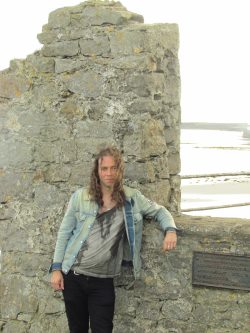We put the following questions about Manx nationalist and political martyr Illiam Dhône to acclaimed historian John Callow. For more information on Illiam Dhône and the historical context in which he lived, read our introduction to Illiam Dhône.
1. Why do you think Illiam Dhône took the actions that he did and which eventually led to his execution?

The English Civil War (1642–1651) had placed enormous strains upon the Manx economy and society. The island had been militarised to an unprecedented degree, with the creation of new state of the art artillery forts and gunpowder mills. Conscription was used for these building projects and for sustaining the Earl of Derby's war effort. In addition, the Earl had sought to overturn inheritance law, limit farm leases, and re-assert the centralised control of Stanley authority in almost every aspect of Manx life. The balance between lord and tenant was dramatically redrawn on the Isle, in favour of the rich and the powerful.
It was no surprise, therefore, that there was discontent: or that a rebellion had been attempted before, in 1643. What was surprising, not least to the Stanleys, themselves, was that the rising of 1651 was led by one of their own clients. However, it really shouldn’t surprise us that Illiam Dhône was moved to act in the good of his island home.
He knew full well what could happen to a native Gaelic society when it was visited by English invasion. Tales of (and refugees from) Ireland at the time of both the massacres of 1640 and the Cromwellian conquest of 1649 would have been the source of frightening rumours and first-hand accounts of the cultural and physical devastation wrought by the total collapse of Charles I's government.